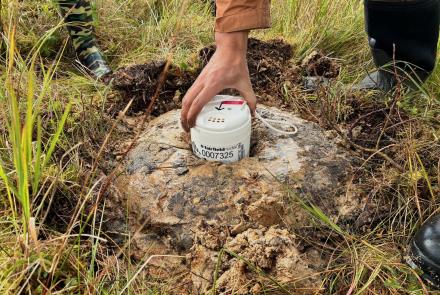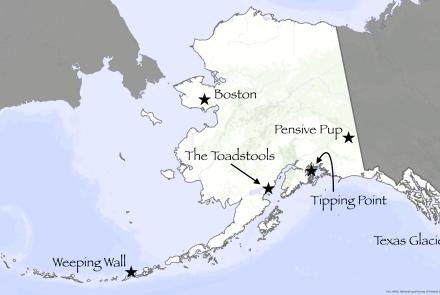

Faces on a beach in Southwest Alaska
Walking a storm-scoured Alaska beach, archaeologist Rick Knecht knelt to pick up a wooden figurine the size of his palm.
He squinted at it and identified the piece as a doll that might have belonged to a little girl, one who had lived and died there centuries before. He handed it to Alice Bailey, who was walking beside him.
“We were the first people (the doll) had seen in 500 years,” Bailey said over the phone from the village of Quinhagak.
Quinhagak, home to about 700 Alaska Natives, sits exposed on the mouth of Kuskokwim Bay, part of the Bering Sea.
While the ferocious spinout of Typhoon Halong was floating houses and destroying much of nearby Kipnuk — and doing similar but slightly less thorough damage to Kwigillingok — the people of Quinhagak mostly escaped catastrophe.
That storm, however, ate into an old village site Knecht and other archeologists have been excavating for years along with local villagers. They have created a museum in the village with hundreds of thousands of items, some of them exquisite masks carved of spruce.
The latest storm took another bite into the site called Nunalleq, Yup’ik for “the Old Village,” scattering artifacts along the Bering Sea coast just as winter arrived with sub-freezing temperatures and of course the wind.
Knecht is a professor emeritus with the University of Aberdeen in Scotland. He first flew to Quinhagak 17 years ago when he worked at the University of Alaska Fairbanks.
Back in 2007, another big storm had exposed the village site that Yup’ik people had occupied beginning in about 1570. People remained there at least until between 1645 and 1675, when others attacked and set fire to the village. There is no sign of occupation after that.
Nunalleq, where as many as 300 people once lived, is about 2 miles from the current village site of Quinhagak. The ancient village was near the Arolik River, a productive salmon stream.
“We think that the river ran in front of the site, separated from the sea by a long sand spit,” Knecht said from Quinhagak, which he reached with funding from the Anchorage Museum and the Henry Luce Foundation. “It was a winter village but occupied by at least some people year round.”
After the recent storm, Knecht rushed to Southwest Alaska, knowing many artifacts would be exposed on the beach.
After joining locals who had already been collecting items, Knecht saw hundreds of additional pieces on the beach. He then called trusted colleagues to come help him.
Those included Bailey, who lives in Fairbanks and works with the Alaska Ocean Observing System. She “emptied her fridge into a cooler” and landed many hours later on the airstrip in Quinhagak. She was on the beach within one hour of touching down.
The new shoreline was foreign to Bailey, who had been there a few times. The same was true for Knecht, who knew the bumps in the tundra as if they were old friends.
“I don’t recognize the beach or the site as it was since my last visit in July,” Knecht said. “All the landmarks that told me where I was are gone. We lost a good 20 meters (about 65 feet) or more.”
Knecht was accustomed to the site changing each time he visited; villagers finding carved masks and other items freed from thawing permafrost had been the reason for his first trip in 2009. But Halong’s storm surge has left behind just around 27 percent of the ancient village site.
It is the latest in a “head-spinning” reduction in protective frozen soil Knecht has noticed over the years.
“In the first years we began to hit winter-frozen soils just under the surface; it wasn’t fully thawed until early August,” he said. “By 2015, the ice in deeper holes and house posts was gone.
“When the site thawed, the more fragile organics began to rot. By 2023, finds of grass basketry and woven mats, once common, were rare,” he said. “Even if these preserved sites don’t erode away, they begin to decay as soon as the permafrost thaws.”
While Knecht and his partners walk the beach to preserve what they can from the Yup’ik people who predated the arrival of Russians and Europeans sailing ships with tall masts, he wondered about the future of the villagers in the Yukon-Kuskokwim Delta. Those thousands of souls, in dozens of small communities, face the consequences of sea-level rise, loss of sea ice, storm surges and permafrost thaw.
“Villages now have all our modern material culture piled on their backs,” Knecht said. “In former times you didn’t need to move your power plant, your water treatment, your big school.
“With enough funding, those kinds of challenges can be met. Without that support, then life in this area may indeed become unsustainable from an economic and political point of view.
“But having said that, I can tell you from the archeologist record (which includes three different settlements during different times at Nunalleq) that the Yup’ik people are incredibly resilient and inventive when it comes to adapting to what has always been an extraordinarily dynamic environment.”





